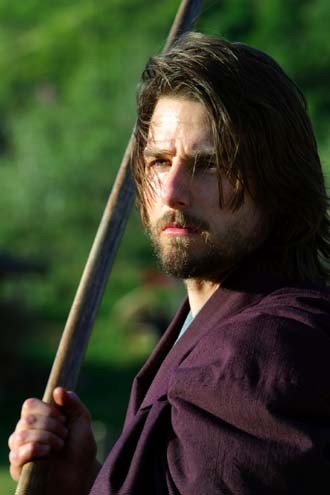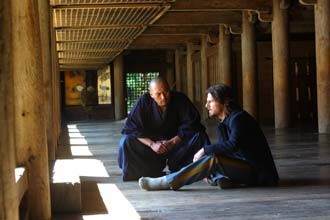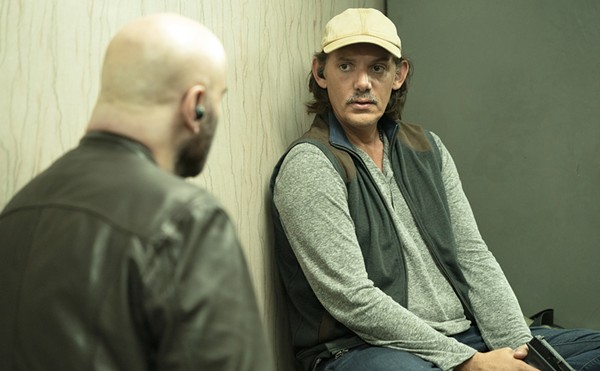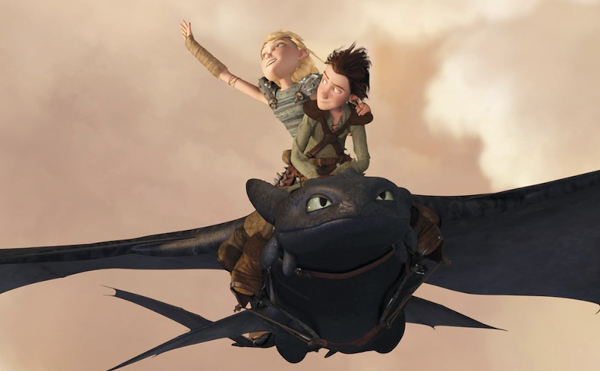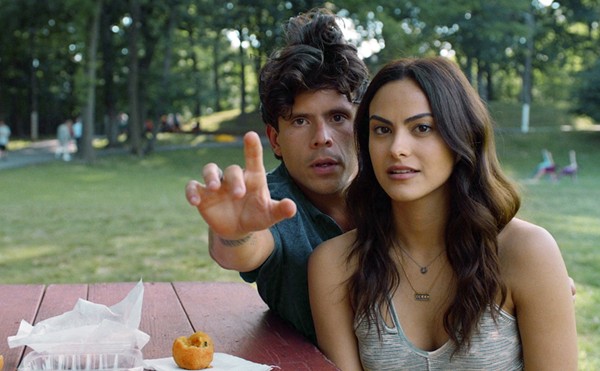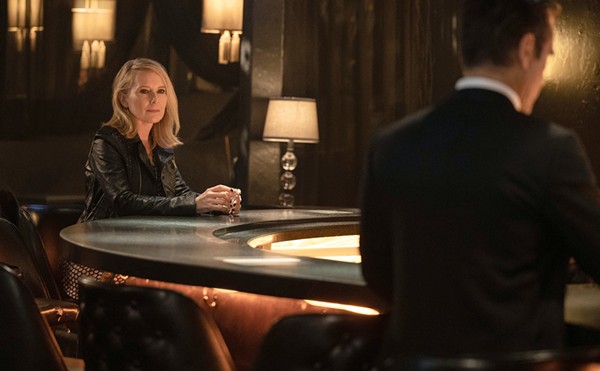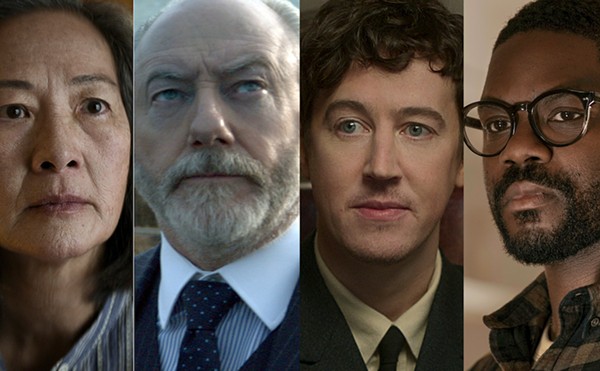| Tom Cruise as Captain Nathan Algren in The Last Samurai (courtesy photo) |
W hat makes A Connecticut Yankee in King Arthur's Court one of the most unsettling of Mark Twain's books is what happens at the end. Hank Morgan, the resourceful 19th-century mechanic who shows up in Camelot in 528, introduces Gatling guns and other products of advanced technology, and the result is a massacre that annihilates the valiant Knights of the Round Table. For most of the novel, Camelot is seen as a benighted site of superstition, Morgan as a hero of modern practicality. But should we be rooting for a man who brings weapons of mass destruction to a culture in which combat is still chivalrous?
I come away from The Last Samurai with similar feelings of unease. Another story about the encounter between modern and medieval, it is set in Japan in 1868, a decade after Commodore Matthew Perry sailed into its ports and forced an end to the Asian nation's proud isolation. Under the callow young Emperor Meiji, Japan is rapidly Westernizing, recruiting foreigners to help transform it into an industrial and military rival of Europe and the United States. A veteran of the Civil War and the Indian campaigns, Captain Nathan Algren (Cruise) is hired to turn raw Japanese conscripts into an efficient fighting force adept in using the latest battlefield equipment. But in the first skirmish, against a band of rebel samurai, Algren's pupils are routed, and he is taken prisoner. Forced to winter with the insurgents in a picturesque mountain village, Algren goes native. Within a few months, he is fluent in Japanese and fluid in his use of traditional swords, knives, and sticks. By springtime, he is fighting beside Katsumoto (Watanabe), the charismatic leader of the samurai, in
| The Last Samurai Dir. Edward Zwick; writ. John Logan, Marshall Herskovitz, Zwick; feat. Ken Watanabe, Tom Cruise, Masato Harada, Timothy Spall, Shin Koyamada, Koyuki, Tony Goldwyn (R) |
Edward Zwick, who directed Glory, returns to the story of a white man who leads soldiers of another race into magnificent defeat. Filming up close, at times in slow motion, Zwick is a master of martial choreography, offering bloody scenes of battle that aestheticize violence, turn it into a tableau vivant of death. A devout Buddhist, Katsumoto cherishes "Life in every breath," and The Last Samurai makes each frame, whether of cherry blossoms or cannonfire, seem precious, even though - and especially because - what we see is doomed. A drama of cross-cultural conversion not unlike Lawrence of Arabia and Dances With Wolves, it evokes an alternative world that is as enticing to the protagonist as it is to the viewer.
| A scene from The Last Samurai (courtesy photo) |

